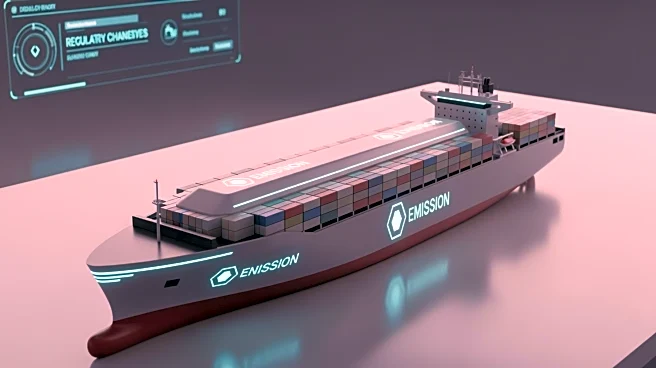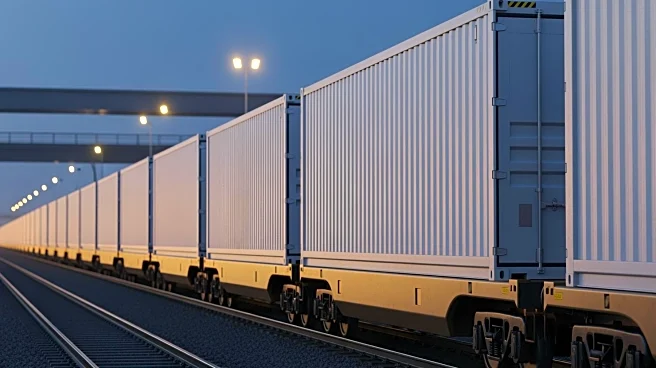What's Happening?
VesselBot's latest quarterly analysis reveals that container ship emissions have remained steady, with a total of 50.3 million tons emitted in Q3 2025. This figure represents a negligible change of -0.2%
compared to the same period in 2024, despite a 2.3% increase in voyages. The analysis covered 73,353 voyages by 4,750 vessels. The average emissions intensity improved to 195.9 g CO2e/TEU km, a 1.6% year-over-year decrease, attributed to longer steaming times and reduced port dwell times. The report highlights significant volatility in direct China-U.S. voyages, which declined by 3% in the first nine months of 2025 but saw a 15% spike in July before dropping 10% in September. Chinese-built vessels accounted for 36% of Q3 voyages, while South Korean-built vessels, which carried out 24.6% of voyages, recorded the lowest emissions intensity due to larger capacities and long-haul trade deployment.
Why It's Important?
The steady emissions levels in the container shipping industry, despite increased voyages, underscore the sector's ongoing challenges in balancing operational efficiency with environmental impact. The report's findings are significant as they highlight the complexities of regulatory compliance, particularly with the European Union's upcoming Carbon Border Adjustment Mechanism and Scope 3 reporting deadlines. These regulations require maritime stakeholders to have access to detailed, real-time data to manage compliance costs and operational efficiency effectively. The analysis also points to the importance of route-level data, as industry averages can obscure critical differences in performance based on vessel size, age, and route, which are crucial for meeting diverse regulatory requirements.
What's Next?
With the EU's Carbon Border Adjustment Mechanism certification requirements set to begin soon, maritime stakeholders will need to adapt to the evolving regulatory landscape. The postponement of the International Maritime Organization's Net-Zero Framework adds further complexity, necessitating a strategic approach to compliance. Stakeholders may need to invest in technology and data analytics to better understand and manage emissions across different vessel types and routes. The industry will likely see increased collaboration and innovation to meet these challenges, potentially leading to new standards and practices in emissions management.
Beyond the Headlines
The report highlights the broader implications of regulatory changes on the maritime industry, emphasizing the need for a nuanced understanding of emissions data. The divergence in emissions intensity across vessel sizes and routes suggests that a one-size-fits-all approach to regulation may not be effective. This could lead to a push for more tailored regulatory frameworks that consider the specific characteristics of different shipping operations. Additionally, the focus on emissions intensity rather than total emissions may drive innovation in vessel design and operational strategies, promoting more sustainable practices in the long term.












